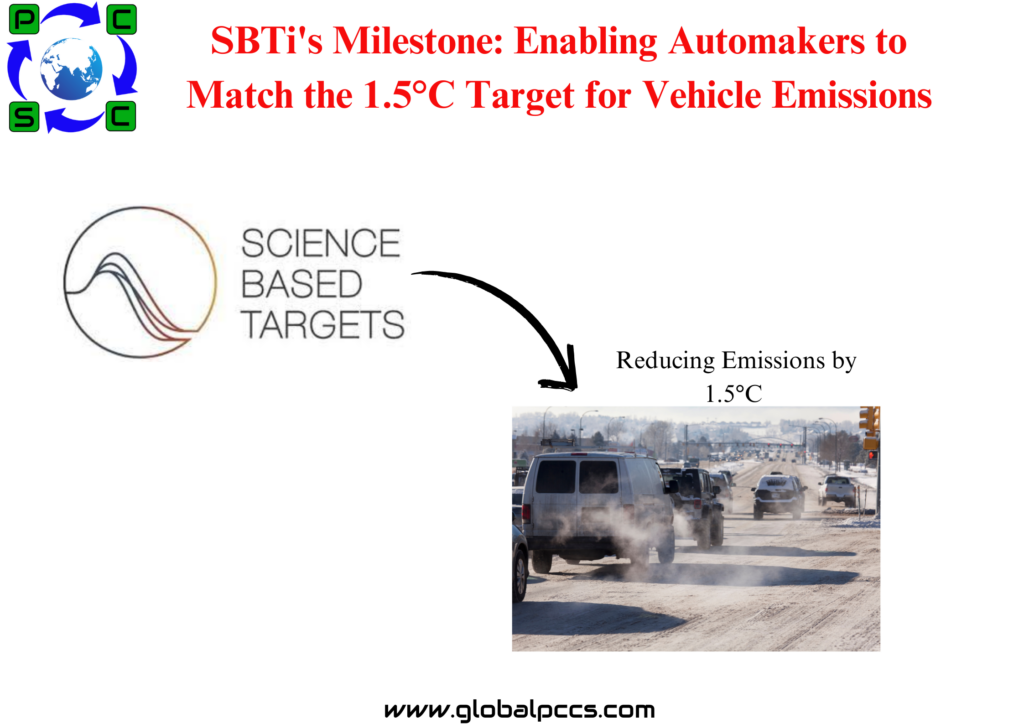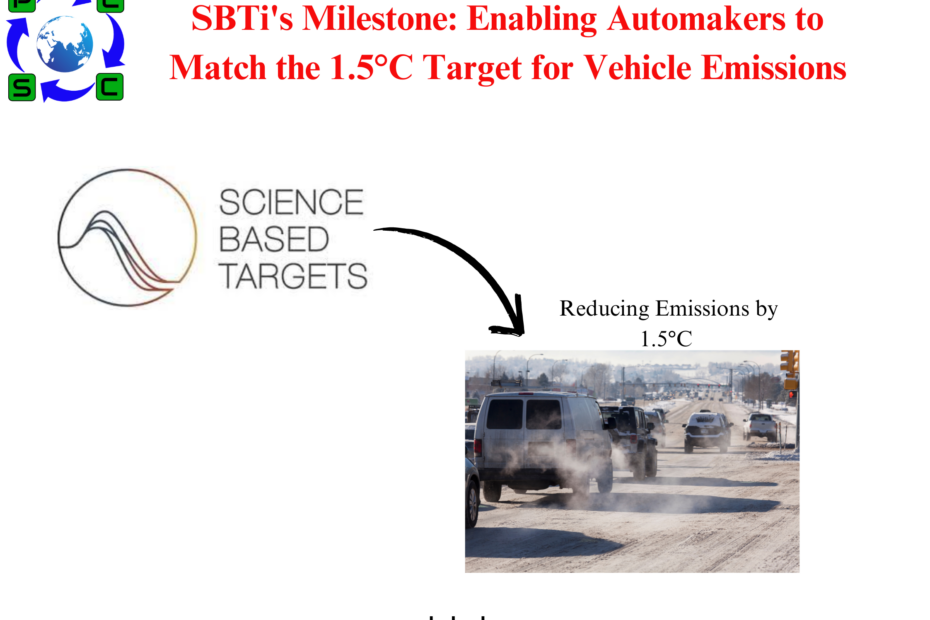 A revised set of guidelines for land vehicles has been announced by the SBTi, which includes a new way for automakers to set objectives for reducing emissions by 1.5°C.
A revised set of guidelines for land vehicles has been announced by the SBTi, which includes a new way for automakers to set objectives for reducing emissions by 1.5°C.
- Automakers can now match 1.5°C with their main source of emissions, which comes from drivers.
- Automotive manufacturers and van builders are required to commit to phasing out gasoline and diesel vehicles when aligning emissions with the Paris Agreement.
- An important first step in creating a new automotive standard is the updating of SBTi’s Transport Guidance.
The updated guidelines for land vehicles, which include a new approach for manufacturers to establish 1.5°C emissions reduction objectives, are being released by the Science Based objectives initiative (SBTi), an international group that facilitates ambitious climate action from the private sector.
In addition to aligning automakers’ primary source of emissions, scope 3 category 11 “use phase,” or emissions from operating vehicles, with 1.5°C for the first time, this updated guidance also includes a commitment to work toward the phase-out of gasoline and diesel for cars and vans by 2035 in key markets, including Europe, Asia Pacific, the United States, Canada, the United Kingdom, South Korea, and Japan.
In addition to being essential to the economy and global transportation networks, automakers also contribute significantly to greenhouse gas emissions. In 2022, private automobiles and vans accounted for about 25% of the world’s oil consumption and over 10% of CO2 emissions connected to energy worldwide. An estimated 4.2 million premature deaths were attributed to air pollution in cities globally in 2019 alone. Diesel and gasoline automobiles are another significant source of these air pollutants.
The amended SBTi Land Transport Guidance has additional standards for manufacturers that include updated criteria for setting 1.5°C scope 3 objectives for the “use phase” of sold cars. This phase covers the emissions of vehicles after they are sold.
In addition, automakers should commit to the global Zero Emission Vehicles (ZEV) Declaration and work toward the phase-out of new Internal Combustion Engine (ICE) cars and vans by 2035 in leading markets, as well as globally by 2040, or earlier if required by local regulations, when setting science-based targets.
A public engagement process was part of the procedure used to design the new criteria for automakers. The revised Land Transport Guidelines are a stopgap measure before automakers adopt an SBTi standard.
It contains an explanation of the reasoning behind automakers’ 1.5°C target-setting methodology as well as an outline of the requirements for other land transport operations that are currently covered by the guidelines but are not changing.
A public engagement process was part of the procedure used to design the new criteria for automakers. The revised Land Transport Guidelines are a stopgap measure before automakers adopt an SBTi standard. It contains an explanation of the reasoning behind automakers’ 1.5°C target-setting methodology as well as an outline of the requirements for other land transport operations that are currently covered by the guidelines but are not changing.
Establishing a New Automotive Norm
In order to align current sector-specific guidelines with the SBTi’s current criteria, the amended criteria for automakers represent a small change to the SBTi Transport guidelines, which was published in 2018.
The program will develop the Land Transport Guidance into an Automotive Standard as the next phase and a part of SBTi’s transition to enhance its standard-setting procedures.
The SBTi will shortly release a call for applications for representatives to join a new Expert Advisory Group, with the goal of developing the new Automotive Standard. Moreover, later in the year, public consultations on versions of the Automotive Standard will be held, inviting input from stakeholders.
Proceeding to Comply
Automakers are required to submit objectives within six months of the revised Land Transport Guidance’s publication if their commitments expire before then. Businesses in this industry who have already established goals will continue to do so, but they are urged to reevaluate them in order to be more ambitious.
The SBTi is ending the brief suspension of automotive target validation in conjunction with the release of the revised Land Transport Guidance and additional requirements. The inability to find a mechanism to match scope 3 category 11 emissions with 1.5°C led to the implementation of the suspension, which has now been fixed. The majority of the emissions from automobiles are represented by these pollutants.
With the release of the Automotive Standard, all objectives that were validated using the revised Land Transport Guidance will still be valid and will go through the customary five-year review cycle.








 Authorised IMDS & CDX Training & Consulting partner for
Authorised IMDS & CDX Training & Consulting partner for





